What does one do about dead trees? The question has been pondered time and again. But before we get into that, it’s important to understand tree death in general. How do trees die? Let us count the ways. Often, a tree dies in situ, standing where it is. Sometimes, its roots weakened by soil erosion, it is felled in a storm. And sometimes, disease takes away a tree, hollowing out its core. A wounded tree falls prey to parasites. Fungus and bacteria, along with insects and worms, eat away the soft living tissue. Fires may singe and scar the bark. Rising water levels often flood tree roots, choking them. Nesting birds like cormorants paint them with copious quantities of caustic guano from their droppings, killing the trees in due course. In the forest, an opportunistic usurper may strangle it. Animals like elephants turn to tree bark when food is scarce, and excessive raids may tear the tree to shreds. Humans may murder it and saw away the wood, leaving nothing but a hole in the ground.
As we can see, when trees die, they don’t go to heaven. Death itself is a long-drawn-out process, often lasting years. After a lifetime of service, a dead tree is pressed into retirement, but the work doesn’t stop even after death. When left alone in the wilderness and not cleared up by foresters, dead trees serve a vital function.
Pause to consider the irony of that sentence.
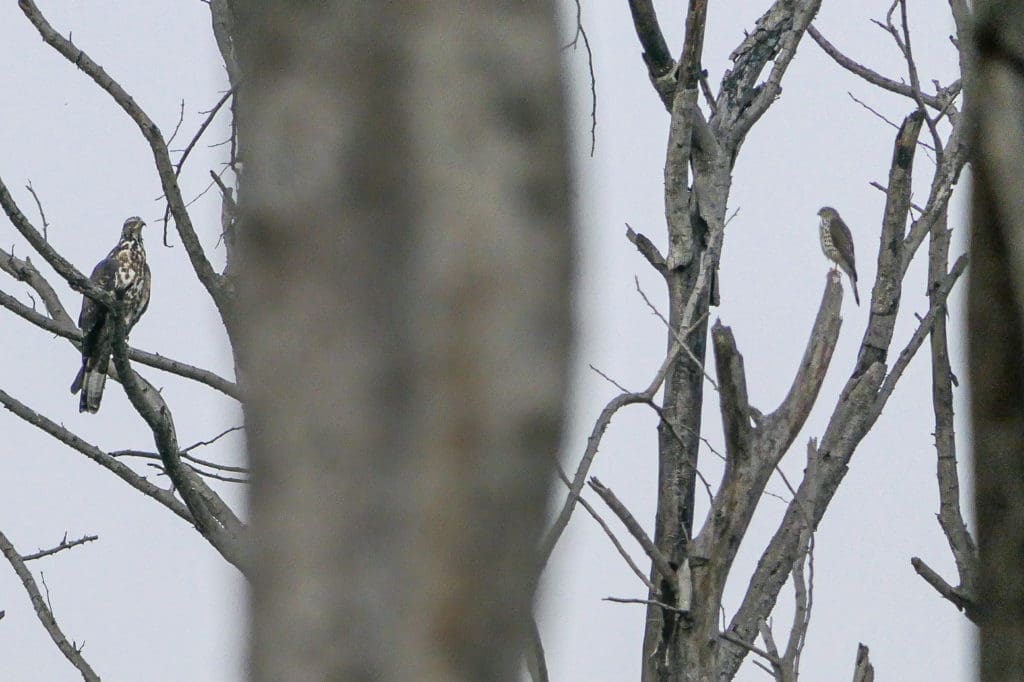
Photo: Beej
Life feeds on life. But life thrives on death, too.
So, what good is a dead tree? Is it a threat to living trees? Is it an eyesore? Should it be removed?
I am part of an enthusiastic community of nature-lovers in eastern Bangalore. Most of us are fascinated by birds and wildlife. Some of us fancy trees. Others spiders and bees. When we are not sharing nuggets on our Signal group, we are hanging out singly, in pairs, or in small and large flocks at our neighbourhood wetlands. One lockdown brought us all together; now we’re enduring another cooped up at home and aching to return to our urban wilderness.
A few months ago, we began an intense discussion on the utility of dead trees at Saul Kere, one of the lakes that we frequent. Besides offering a variety of wetland habitats that harbour over 150 species of birds, Saul Kere also has a woodland on its eastern flank, so dense that it can without much ado be called a secondary forest.
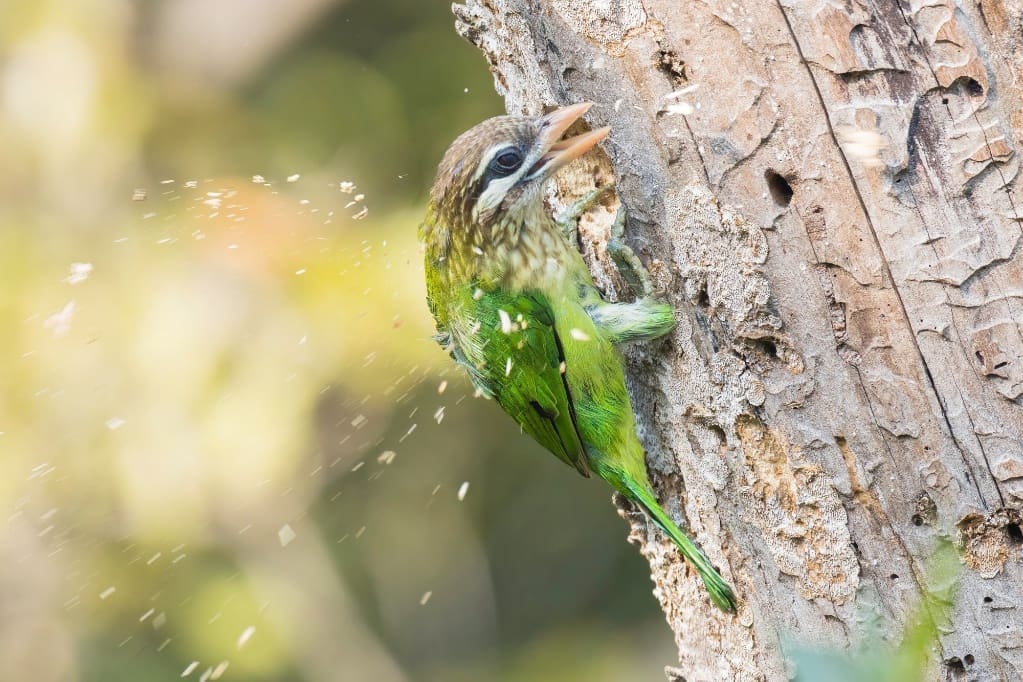
Photo: Saravana S
Bordering this woodland, where the grounds of the lake share a wall with the campus of a well-known information technology company, is a copse of dead trees. How they died one really does not remember, but the sight of them standing there like oversized deer antlers, bare of leaf, their trunks picked clean of bark and cambium, evoked mixed reactions.
Some people wanted them to be removed. Others – particularly the photographers – thought they made aesthetic backdrops for their pictures. A few pondered if they would fetch any money if they were sold. Most wondered why we were making such a big fuss over a few dead trees. Live and let live; live and let die.
For many of us, dead trees are just wood. We use the term deadwood metaphorically to describe things or people that no longer have any utility. I learned that foresters have a word for dead trees, too. They call them snags. Not a pretty word, it suggests that dead trees are obstructions to some sort of imagined progress. The truth is that forests and woodlands without dead trees would not be as full of life. In fact, without dead trees, a forest would slowly and surely lose its pluralistic character and die.
How much life can a dead tree support? Often as much, or more, than a living one.
German forester Peter Wohlleben, known for propounding fascinating but controversial ideas about trees talking to each other through a ‘wood-wide web’ in his book The Hidden Life Of Trees, draws attention to the vast underground fungal networks that intertwine among the root systems of trees in a forest. Scientists know these subterranean systems as mycorrhizal networks. The root-tips of living trees have fine, hair-like strands, which are linked by tiny fungal filaments. Trees in a forest, Wohlleben says, share information, water and nutrients through these networks. Fungi thrive on sugar and the trees produce a lot of it through photosynthesis. For the services rendered by the fungi, the living trees pay a tax: up to 30% of the sugar they produce goes to the fungi. A dead tree is prime loot.
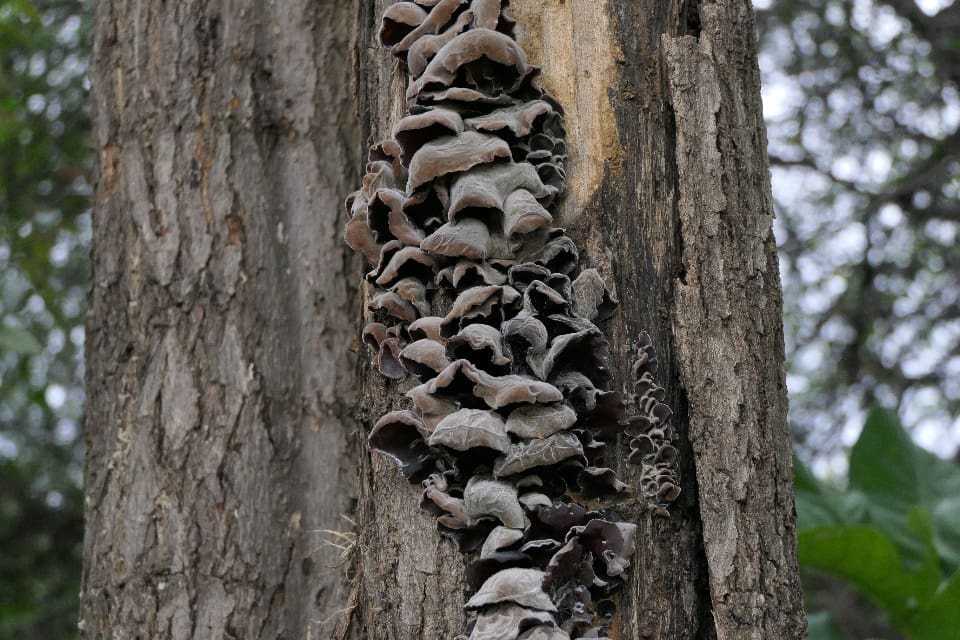
Fungi are first to know when a tree dies. There’s no mourning, no wake. Instead, it’s a party. A feast.
As fungi and bacteria get to work digesting and decomposing the tissue, insects colonise the fallen wood, attracting insectivorous mammals, birds and reptiles. Beetles, which relish tree tissues even while they are alive, lay eggs that hatch and live within the innards as grubs, which are a great source of food for questing woodpeckers. The hollow innards of a dead tree are highly prized real estate. Hole-nesting birds stake their claim, but they are careful to let the heavy lifters make the first move.
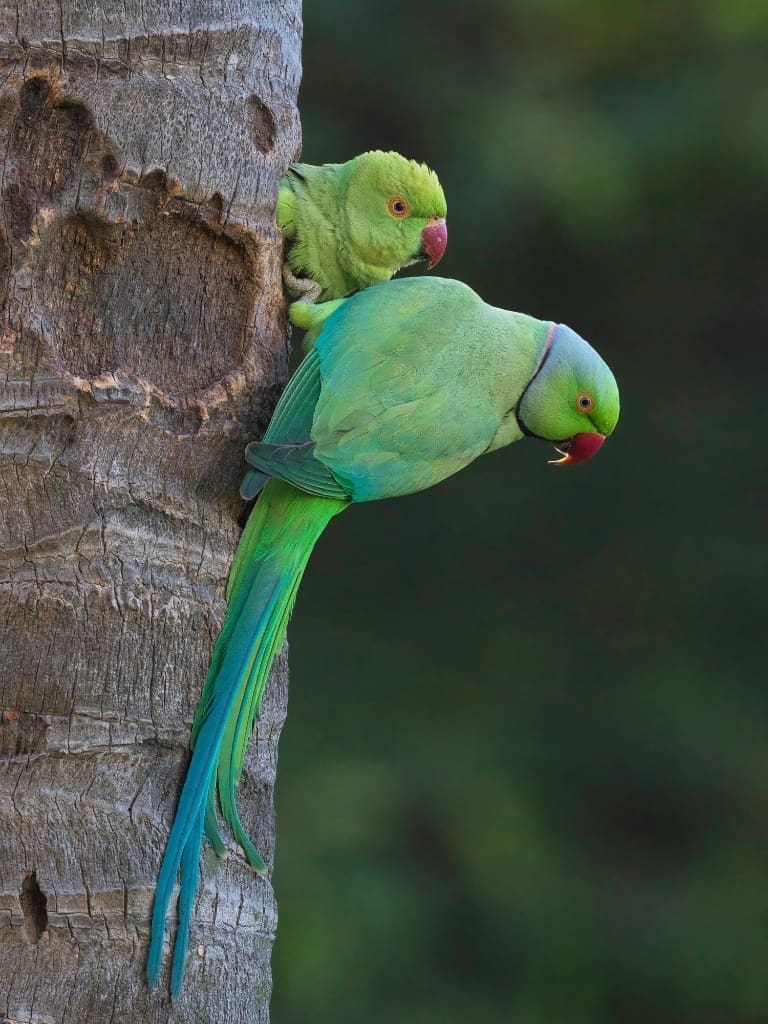
Photo: Saravana S
Woodpeckers and barbets are the builders of the woodland. They have a knack for seeking out the ideal nesting sites. Woodpeckers are often seen clambering up and down the length of a branch, probing intently for chinks in the tree’s armour. Tapping and drumming against the bark, they listen for the sound the wood makes. A hollow echo may be the cavity made by a burrowing beetle larva. The bird’s probing bill morphs into a power tool. In goes the drill, boring through the bark to get at the morsel. In due course, some of these excavations result in permanent hollows, offering an access point for moisture and fungal growth. The tree may fight back, but repeated attacks leave it vulnerable. On live trees, wounds may heal and scar over time, but in dead trees, they present opportunities to be exploited.
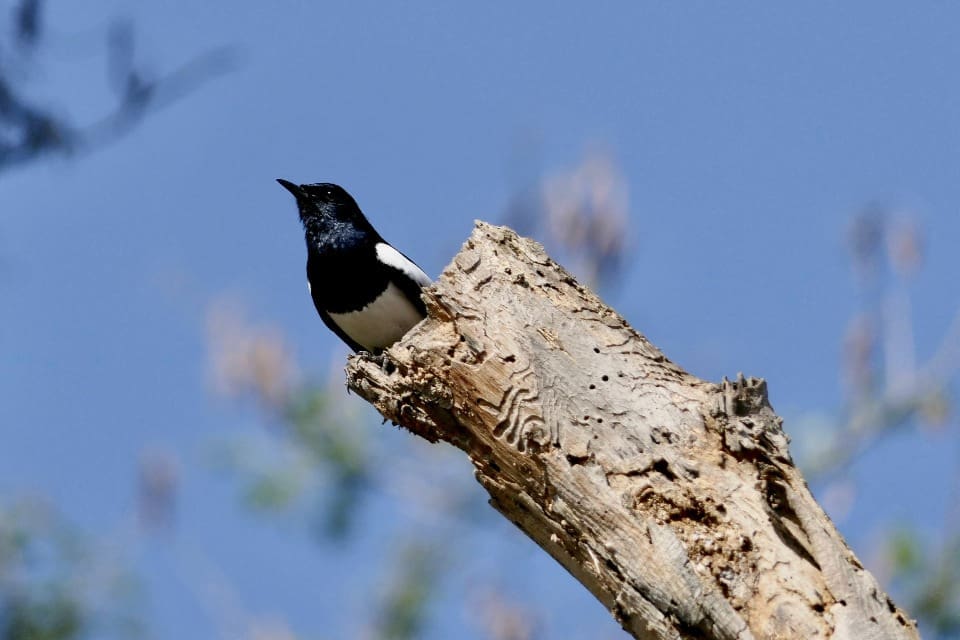
Photo: Beej
At Saul Kere, Black-rumped Flamebacks and White-naped Woodpeckers have been observed on occasion, but it is the White-cheeked Barbets and their smaller cousins, the Coppersmith Barbets, that are the most prolific builders. Over time, the holes they make in the deadwood are taken over by Rose-ringed Parakeets, Oriental Magpie-Robins, Common Mynas and Jungle Mynas. Dead coconut palms, beheaded by lightning strikes or disease, offer attractive short-term co-living accommodations. The hollowed-out core of the palm allows for multiple apartments with separate entrances and often, shared common areas. Privacy may be a concern, but good behaviour and tolerance are essential for coexistence. We have observed parakeets and barbets coexisting quite harmoniously with large families of Spotted Owlets.
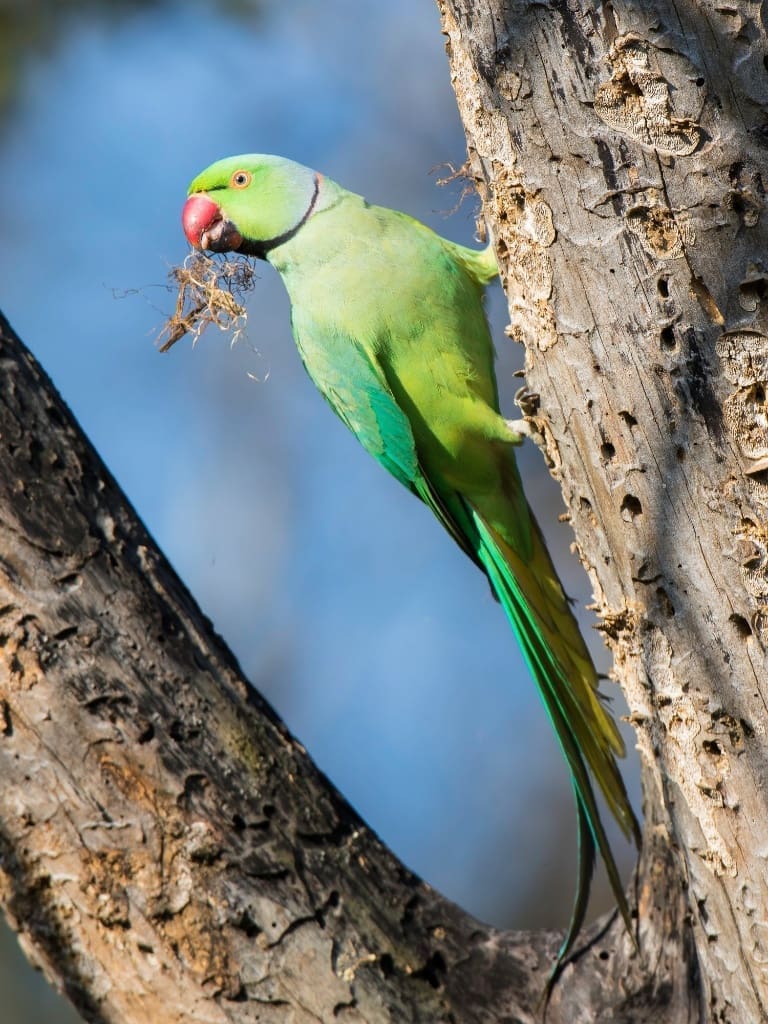
Hoopoes, White-throated kingfishers, Spotted Doves and Green Bee-eaters favour the bare branches as perches. Sometimes, the odd Shikra or Oriental Honey-Buzzard can be seen in the woodland, scanning the surroundings while perched atop a dead tree stump.
Eventually, completely eviscerated and eaten out hollow by termites and other insects, the trees collapse. The space they vacate in the woodland is occupied over time by shrubs and grasses, even other saplings. The remnants nourish the soil, creating fertile beds for wind-blown seeds to plunge roots. From death, the forest springs to life.
In late March, before the second wave of the pandemic drove us indoors, I stood in the woodland at Saul Kere, watching a pair of parakeets engaged in studious home inspection. They had picked out the used nest of a White-cheeked Barbet, which had raised a brood recently. Patiently, and with great diligence, they scoured out the hole and took out the previous occupants’ garbage. This went on for hours, even days, and eventually the pair moved in to raise their own brood.
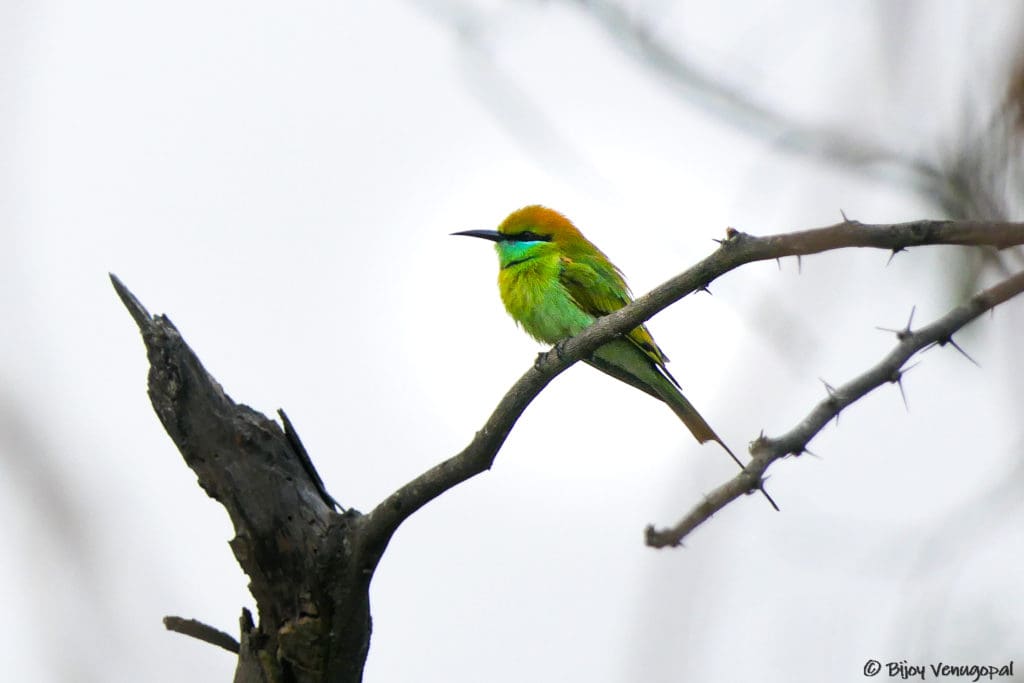
Photo: Beej
As I watched them, ignoring the squabbling Jungle Mynas behind me, a party of green bee-eaters sailed through the air like oversize butterflies and alighted on the deadest, barest bough, trilling the very words that were music to my ears: Tree-tree-tree-tree…
Some of the fine photographs used to illustrate this post, including the cover picture, were generously contributed by Saravana S, who maintains an excellent photo blog documenting the birds of our neighbourhood wetlands
- TL;DR – Death Stalks Like A Marabou Stork - July 24, 2024
- Dimorphic Egret – Meet this East African mystery bird - June 8, 2024
- Encounter: Northern Treeshrew in Arunachal Pradesh - May 19, 2024

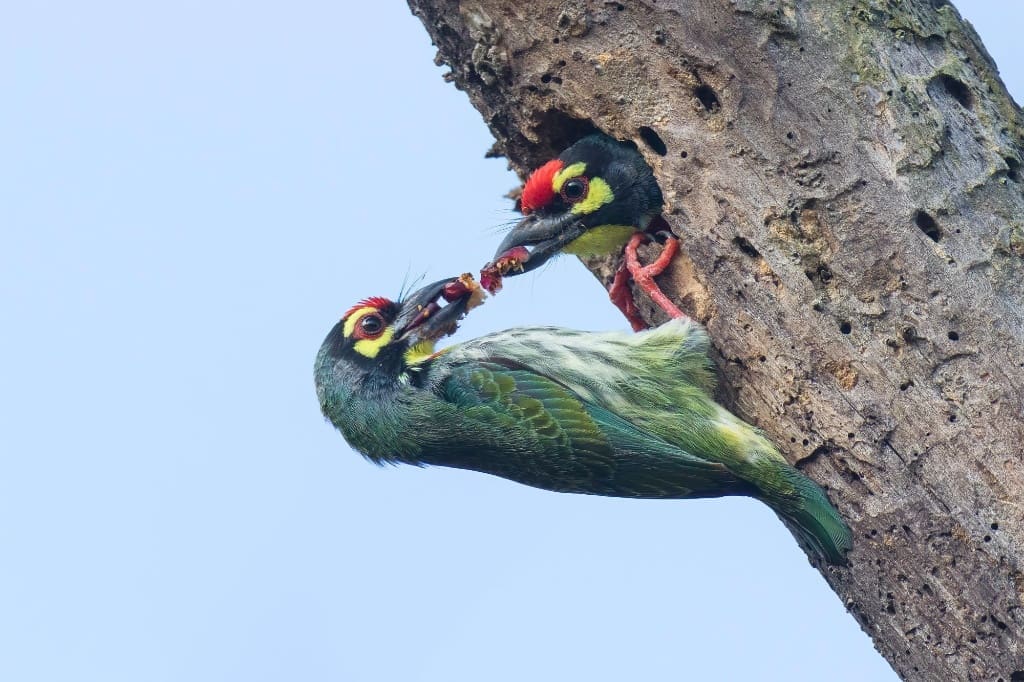

This is a beautiful nugget of information, the circle of life never fails to amaze me. Thanks for bringing this to us, loved the style of narration too.
Thank you for reading, Sandeep. And sorry for the delayed reply. As you can see, we’ve fixed some stuff on the site and things are humming nicely again.
I loved the descriptions and the writing. Life begets life and the cycle continues. There is a touch of philosophy in your writing.
Keep going.
Thank you very much for reading and for the encouragement. As you doubtless know, our conversations about nature have always been enriching for me since I was a young boy.
– Biju
You’ve breathed so much life into dead trees! It’s a beautiful account, informative & insightful. Dead-tree ecosystem watching is now on my to-do list!
Thanks for reading, Gayatri! It’s a great place to start exploring the wondrous intricacies of nature. I believe by watching the interplay of death and life, I’ve honed my Sixth Sense.
And, of course, “I see dead trees” is nowhere as morbid as “I see dead people!”
– Beej
“I see dead trees” I miss your office days humor!!!
I think you are a bit sentimental with nature, never tongue in cheek, always empathetic.